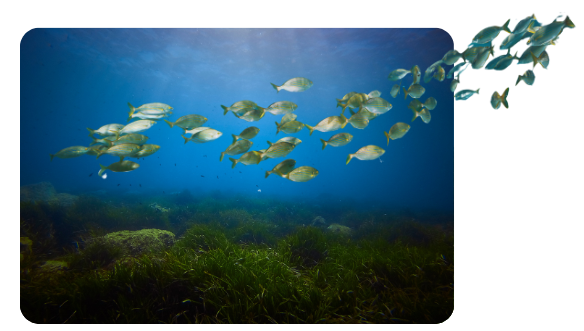Story
Weather, time and phytoplankton blooms
16 July 2020
Computer models used to study important phytoplankton blooms can be affected by how often weather variables are input, a new study suggests.

During certain periods of the year, phytoplankton grow rapidly, forming “blooms’. As phytoplankton are at the bottom of the marine food chain, the timing of these blooms can have a strong impact on marine ecosystems and, ultimately, the global flux of carbon from the atmosphere to the sea floor.
Computer models can be used to predict how changes in the environment, such as those caused by climate change, are likely to affect marine ecosystems. To do this, the models need to accurately simulate phytoplankton blooms, which is what the new study, led by scientists at PML, focused on.
As the timing of the blooms are affected by meteorological variables, like sunlight, air temperature, and wind speed, these factors are an important part of the models. The study investigated the results of changing the time period between inputs of these variables into the models (ranging from 1-24 hours), using two contrasting marine sites.
Researchers found that a shorter time span between inputs led to the model showing more fluctuations in wind speed and, therefore, increased wind stress acting on the sea surface. This then caused an increase in turbulence and mixing within the water column below the surface.
This mixing would mean that the water below would be layered, or stratified, for a shorter portion of the year. The result of this is a delayed onset of the spring phytoplankton bloom by up to six days and, often, an earlier end to the autumn bloom, shortening this growing season by up to 23 days.
Additionally, a shorter time span between inputs caused a weakened microbial loop (where carbon is taken up by bacteria and then moves up the food chain). This occurred because the changed time span between inputs led to differences in availability of a resource, light at one site and nitrate at the other, causing less carbon production by phytoplankton.
The results of the study suggest that researchers need to be careful when comparing models that use different time gaps between meteorological inputs. When the models are used in research, they may need to be recalibrated if they are upgraded to use new state-of-the-art products which have smaller time gaps between these inputs.
Dr Helen Powley, PML modeller and lead author of the study, said: “This study was motivated by the release of an upgraded, high resolution meteorological dataset which can be used in ocean models. We show that researchers need to consider the implications for phytoplankton bloom timing and ecosystem dynamics if these new datasets are used in marine ecosystem models.”
Related information
‘Sensitivity of Shelf Sea Marine Ecosystems to Temporal Resolution of Meteorological Forcing’ is published Open Access in JGR Oceans
This work was supported by NERC‐funded projects, Combining Autonomous observations and Models for Predicting and Understanding Shelf seas (CAMPUS) and Climate Linked Atlantic Sector Science (CLASS)
